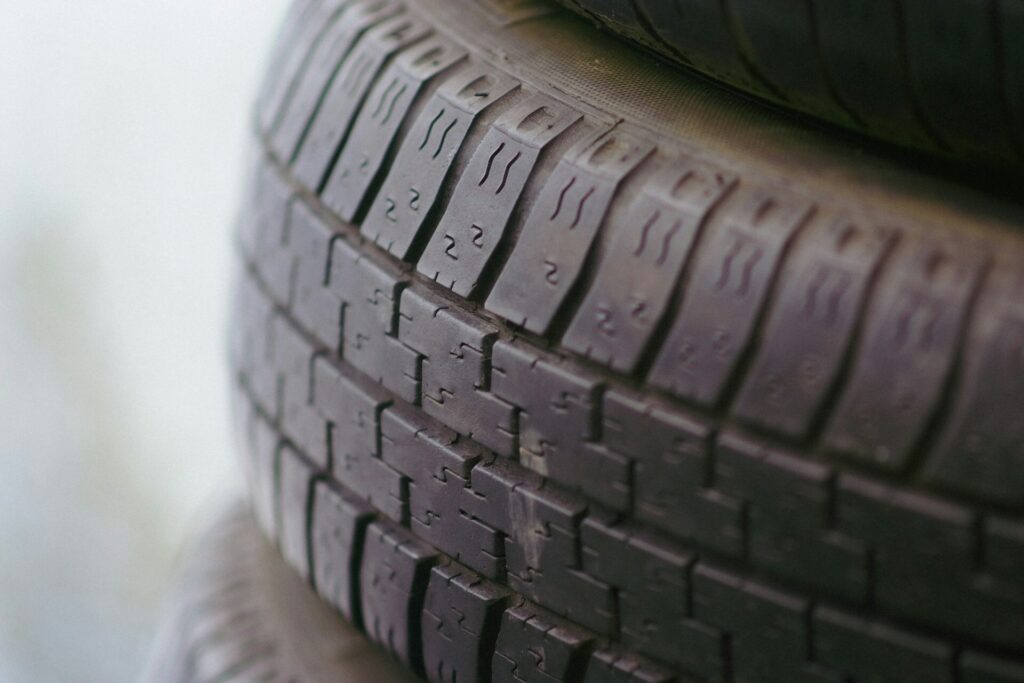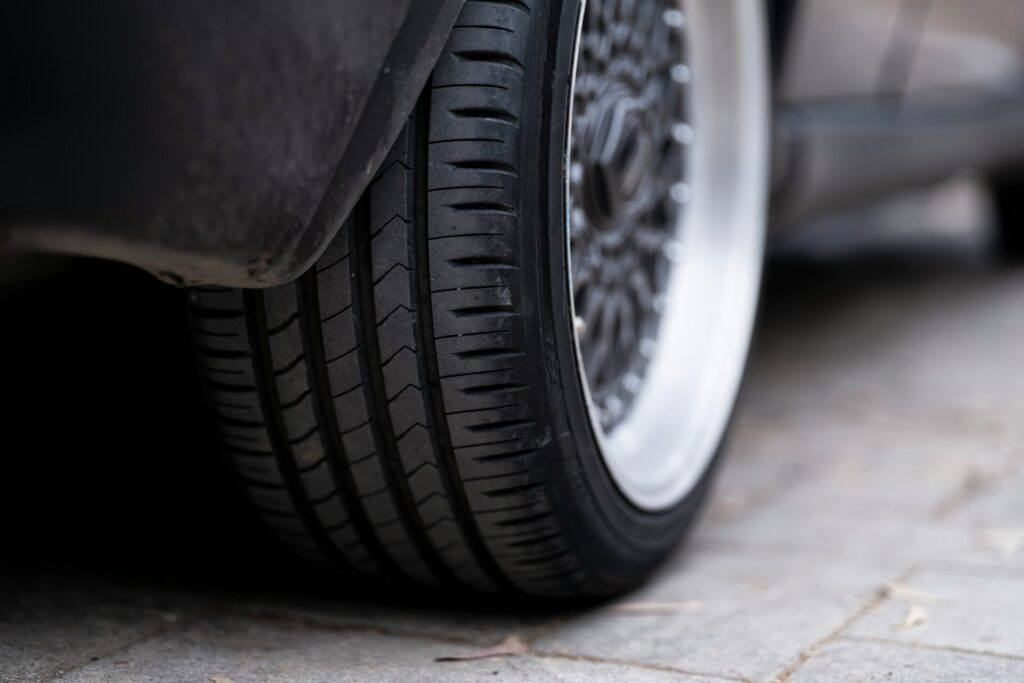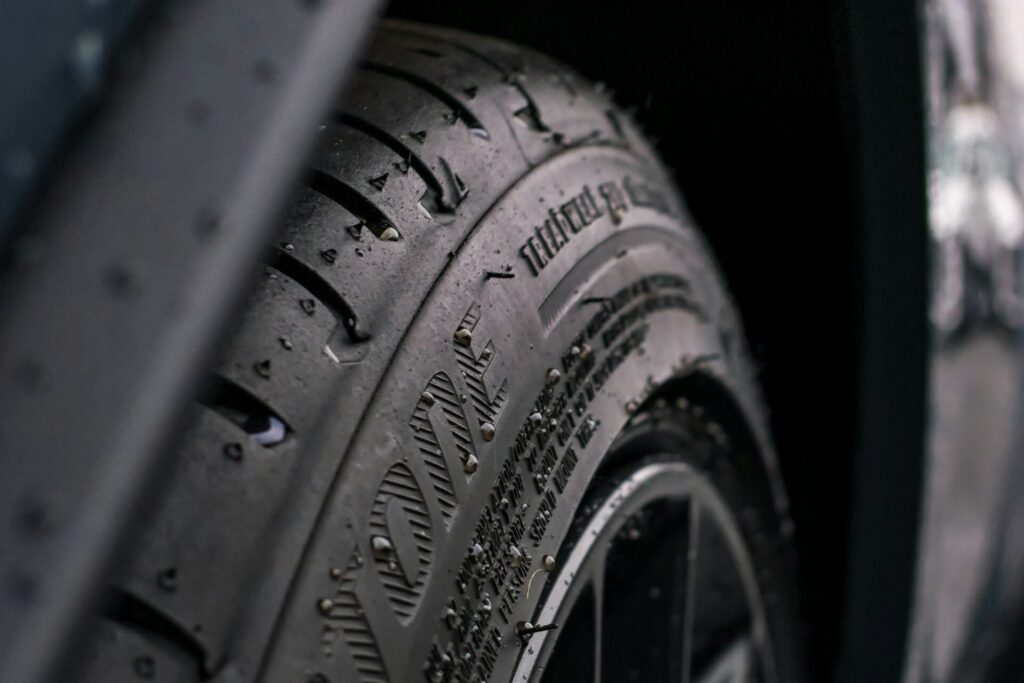
As an Amazon Associate, Modded gets commissions for purchases made through links in this post.
Tire rotation is vital to keeping your vehicle roadworthy. It’s not car maintenance 101, though. Wondering how to rotate tires rarely crosses the average motorist’s mind since service technicians generally handle this task. Many car owners are unaware of it being a thing, while others are disinterested in it because it needs some elbow grease.
However, doing it is one thing. Knowing how to when needed is another. A proper understanding of tire rotation is a badge of honor for gearheads.
For non-auto enthusiasts, this skill can make you more self-sufficient, boost your confidence as a car owner, and save you trips to the mechanic — not to mention cash — on many occasions.
Are you ready to get your hands dirty? Let’s get started!
What Does It Mean to Rotate Tires?
Rotating your tires means periodically changing each of your tires’ positions on your vehicle. If you’ve owned your automobile long enough, the service crew has likely rotated its tires for you during past scheduled maintenance sessions.
There’s a science behind tire rotation, so you can’t just remove all wheels and assign them to random axles. Incorrect orientation does more harm than good, so ensure you know which one goes where before jacking up your vehicle and picking up your lug wrench.
Why Do You Rotate Tires?

Changing your vehicle’s tire positions regularly is crucial to ensure even treadwear. Front tires generally wear the fastest, regardless of the drivetrain. These tires bear the brunt of acceleration, steering and braking.
In front-wheel drive (FWD) vehicles, the engine transmits power to the front wheels, which are responsible for steering and traction, causing their rubber to wear more quickly. Rear-wheel drive (RWD), all-wheel drive (AWD) and four-wheel drive (4WD) systems distribute power more evenly to all wheels, resulting in more balanced wear across front and rear tires.
Regardless of your vehicle’s drivetrain, tire rotation is necessary for various reasons.
Tire and Suspension Longevity
Not rotating your tires as frequently as you should will lead to unequal tread loss, especially when combined with aggressive driving maneuvers. Tires don’t last forever but should age at the same rate. Otherwise, you’d have to retire them ahead of what their treadwear grade suggests.
Replacing a worn-out tire is more expensive than you think. If the problem tire is too damaged relative to the others, you may have to buy at least one set, doubling your expense. You may often have to replace all four to eliminate any imbalance.
Also, there’s no wiggle room regarding tire options. Unless you’re replacing them all, you must stick with the remaining set’s brand, model and specifications. Any mismatch can negatively affect your drivetrain’s integrity and your vehicle’s drivability.
Uneven tread loss can produce unusual vibrations that can damage your suspension system prematurely. The faster you go, the more intense the vibration.
Safety
2022 saw 562 people die from tire-related accidents, so skipping tire rotation is a serious road safety issue. Wear unevenness increases friction by forcing your tires to move at various speeds. More friction translates to more heat. High temperatures accelerate treadwear, starting a vicious cycle.
Hydroplaning — when your vehicle slides on the road uncontrollably — is another cause for concern. Treads produce traction, allowing you to properly steer your vehicle when the rubber meets the road.
Losing substantial tread depth due to significant wear diminishes your tires’ grip on surfaces, especially during inclement weather. It can cause your vehicle to go where it shouldn’t inadvertently. Tires optimized for gripping into snow and ice may spin out of control under slippery conditions with irregular treads.
You’re more likely to encounter blowouts when you seldom rotate your tires. A super worn-out tire develops a thin spot after experiencing extreme strain. The thinner this soft underbelly becomes, the more prone it is to being punctured upon contact with any sharp object.
Bringing a spare tire and knowing the best practices when dealing with a blowout on a highway — such as demobilizing your vehicle, making yourself prominently visible to other motorists and inflating a doughnut tire to at least 60 pounds per square inch — helps. Still, the terror of hearing a loud noise out of nowhere can cause you to lose your grip amid high-speed traffic.
Comfort
Smooth rides owe themselves to evenly worn tires. If you commute often and are familiar with how your vehicle normally feels on the road, you may sense something strange when treadwear unevenness becomes undeniable. This experience can cause physical and mental discomfort, distracting you from driving properly.
Fuel Efficiency
Rotating your tires is a surefire way to get more miles per gallon, boost your vehicle’s fuel economy and reduce your regular auto expenses. Your vehicle’s engine detects insufficient traction and compensates by using more gas or diesel to help you stay in control.
Warranty Adherence
Regular rotation is one of the requirements to keep your tire warranty valid. Falling short of this expectation voids this written guarantee, absolving your tires’ manufacturer of any responsibility to address any legitimate product defects.
Auto Insurance Premium Stagnation
Disproportionate treadwear can indirectly inflate your car insurance rate. Your driving record is a significant factor dictating whether your premium will go up or down. It reflects your car maintenance commitment as well as your ticket and accident histories.
Preserving a spotless driving record is challenging without uneven tire wear, which, by default, renders your vehicle less roadworthy. Even skilled motorheads are prone to crashes when behind the wheel of a less drivable sedan, hatchback or light-duty truck.
If you file a claim after getting into a vehicular accident due to a highly worn-out tire, you’ll give your insurance carrier to jack up your premium — a double whammy.
When to Rotate Tires

The average rotation interval is 6,000-8,000 miles, but some tire makers may deviate from this typical range. To precisely know how often to rotate tires, check your tire manufacturer’s recommendation — or requirement when you still have an active warranty.
Furthermore, you may have to rotate ahead of schedule for various reasons.
You Can’t Remember the Last Time
Driving infrequently may seem to slow tire deterioration, but it isn’t necessarily the case. Hitting the road with underinflated tires erodes tread mileage, slashing a considerable portion of your tires’ expected service life.
Spending less time on the road may lull you into a false sense of security that your tires’ treads are still deep enough for ample traction. When you can’t recall your vehicle’s last rotation session because it takes you forever to hit the mileage threshold, it may be a sign you need to pay more attention to tire maintenance.
Look for evidence of unequal tread loss. If one of your tires seems to be losing more rubber than the others, rotate and inflate them accordingly. You can skip replacement when the tread depth in your front tires’ major grooves is 4/32 inch or deeper while that of your rear ones is 2/32 inch.
You Can See Lincoln’s Head
If you do the Penny Test and note that Abraham Lincoln’s head is inconsistently visible, it’s a sign of uneven tread wear. You may have to hit the panic button when Abe’s head is peeking, for it indicates the tread loss is significant enough to reduce your vehicle’s ability to grip the road in challenging weather conditions.
You Notice Odd Wear Patches
Some cases of tire wear are too obvious to ignore. When a tire’s grooves appear shallower than those of the other tires, you should rotate it sooner rather than later.
You Feel Your Vehicle Strangely Vibrate
Automobiles — whether they have internal combustion engines or electric motors — vibrate due to the mechanical forces at work when they run. However, due to imbalanced tread loss, your vehicle may produce more vibrations than usual. Timely tire rotation should prevent this issue.
You Struggle to Handle Your Vehicle
Is your car or truck less responsive than it should be? Your vehicle will find it difficult to grip the road like it used to when some tires are more worn than others. Rotate them correctly before this handling issue worsens.
How to Rotate Tires

Rotating tires sounds intimidating. However, it’s a walk in the park compared to replacing brake pads, which involves cleaning the rotor mounting surface, inspecting the piston, determining adequate caliper tightness, on top of removing and reattaching the wheels with a breaker bar. All you need to get started are a car jack, a lug wrench, a tire pressure gauge, gloves and basic knowledge of how to change tires.
You can rotate your tires in many ways. The most suitable rotation pattern for your vehicle depends on:
- Drivetrain type — FWD, RWD, AWD, 4WD or dual-rear-wheel (DRW)
- Tire symmetry — nondirectional or directional
- Tire size
- Spare tire availability
Learn how various patterns work and which one is best for your vehicle.
Forward Cross
This pattern applies to FWD vehicles with nondirectional tires of uniform size. You diagonally move the rear wheels up to the front axle’s opposite sides while you place the front wheels directly back.
Rearward Cross
This one suits RWD systems with same-sized nondirectional tires. It’s the opposite of the forward cross pattern. You diagonally move back the front wheels to the rear axle’s opposite sides while the rear tires advance directly to the front.
X-Pattern
If you want to know how to rotate tires on 4×4 and AWD vehicles, this pattern is your best bet. It involves moving all tires diagonally. Each wheel switches axles and winds up on the opposite side. This pattern makes sense only when your tires are nondirectional and of similar size, making them interchangeable.
Front-to-Rear
Curious how to rotate directional tires of uniform size? Make the front and rear wheels switch places while remaining on the same side. This rotation scheme doesn’t involve crossing because directional tire manufacturers optimize each unit’s tread pattern for either left or right for maximum performance.
Side-to-Side
When rotating differently sized directional tires, you should move each to the opposite side without changing axles. The front wheels should remain on the front, while the rear ones should stay on the back.
Five-Tire Rotation
If you have a full-size nondirectional spare street tire, you should include it in the rotation to ensure even treadwear.
Position the newcomer on the right rear, designating the tire that would’ve gone to that spot as your new spare. In the forward cross pattern, your new spare tire would be the tire on the front axle’s side. When doing rearward cross or X-pattern, the tire on the left front would move to the spare position.
This rotation philosophy is particularly critical in AWD and 4WD systems, where minor unevenness tread loss can do a number on the drivetrain.
If you have a donut, exclude it from the rotation because it’s unidentical to the other three tires. This temporary tire belongs to the rear axle and is for short use only — a lifeline to get you to the tire shop when you notice a flat or have a blowout. You can’t use a donut permanently because it’s too small to support your vehicle’s weight, causing it to deflate quickly.
Six-Tire Rotation
If you have a dually truck — a DRW pickup whose rear axle has a pair of two tires on each side — do a modified front-to-rear rotation pattern. In DRW systems, the tires remain on the same side and rotate counterclockwise.
On your vehicle’s left side, move the inner rear wheel to the front axle. Reposition the front tire to the outer rear spot while the outer rear wheel shifts to the inside.
On the right side, transfer the outer rear tire to the front axle. The front wheel moves back and becomes the inner rear one. Lastly, the inner rear tire migrates to the outer spot.
Whatever rotation pattern your vehicle requires, remember to check tire pressure. To stay safe on the road, inflate all your tires as needed based on their manufacturer’s recommendation.
Tire Rotation Is a Must-Learn Skill
Knowing how to rotate tires properly even when you don’t have to makes you a much more responsible car owner and road user. Although it can seem overwhelming in practice, this guide will help you do it flawlessly.
Stay up to date with the latest by subscribing to Modded Minute.
Author
Jack Shaw is a senior writer at Modded. Jack is an avid enthusiast for keeping up with personal health and enjoying nature. He has over five years of experience writing in the men's lifestyle niche, and has written extensively on topics of fitness, exploring the outdoors and men's interests. His writings have been featured in SportsEd TV, Love Inc., and Offroad Xtreme among many more publications.






